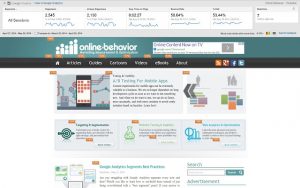Don’t let ‘quantity over quality’ be the mantra of your mobile-first business plan. Contributor Shani Rosenfelder explains why recent changes mean marketers need to pay more attention to engagement and metrics.
 Sustainable business growth doesn’t come without providing value. Now more than ever, it’s crucial to build brand affinity and loyalty in a commoditized mobile world. Everyone has a smartphone, there are millions of apps in the app stores, and almost anyone can quickly and easily create an app relatively cheaply.
Sustainable business growth doesn’t come without providing value. Now more than ever, it’s crucial to build brand affinity and loyalty in a commoditized mobile world. Everyone has a smartphone, there are millions of apps in the app stores, and almost anyone can quickly and easily create an app relatively cheaply.
But to succeed in a mobile-first world, marketing and product teams often need to merge, ensuring a business’s mobile strategy is aligned and offers a real purpose: that it entertains or stimulates (like gaming apps), or that it effectively serves as a gateway to a different type of business (like insurance with Lemonade; transportation with Uber, Gett and so on). This latter notion goes even further, as the foundation of the gig economy is one factor in building economies of scale, in which the mobile ecosystem is a driving force.
The idea of value in mobile is reinforced by the change Google recently introduced to its Play Store algorithm: Rather than ranking apps simply by the number of times they’ve been downloaded, Google now places a higher value on engagement and retention, or “stickiness.” That means that for an app to rank highly in the Play Store, it must have value. It must be used by consumers on an ongoing basis.
This shift marks an important proof point in the case against creating an app for the sake of having an app — or for the sole purpose of driving advertising revenue. The Play Store algorithm change — which is almost certainly mirrored in some way in the App Store — means that app developers and marketers have to think harder about the goals of their apps, and the full customer life cycle as it pertains to that app.
As many have already recognized, “quantity over quality” can no longer be the theme of the mobile-first business plan.
Purpose, not quantity
In fact, the new focus, rather than striving for quantity, needs to be “purpose” — and this is where developers and marketers need to work together closely. Apps, chatbots or any mobile-based innovations need to be purpose-driven to deliver value to consumers and continuous interaction that will drive revenue for the brands behind them. Even with the value that apps like Yelp or Waze may bring, there’s still a need to market intelligently to encourage ongoing engagement.
The full life cycle of the app must be considered, with an eye to a user’s long-term retention. Marketers need to understand what business goal an app aims to achieve, understand how the app helps users solve a problem (even if that problem is boredom), and ensure the goals of both parties — developer and user — are being met.
Both targeting and measurement will factor in heavily here: Marketers should look, again, beyond the number of app downloads and more closely at app engagement, user segmentation and targeting.
Look at the signals and affinities that indicate a user won’t just download an app, but will find value and continue to utilize that app. Given the new Play Store algorithm, that sustained use will ultimately support download volume by reaching qualified users.
Get the metrics right
Importantly, marketers must measure engagement to optimize for both acquisition and retention — but they must also look holistically at ROI.
Measuring the bottom line of an app may seem simple at first glance: Users enter at some cost to the marketer; they use the app, generating value in different ways; and eventually, they stop. But increasingly, marketers are realizing that measurement is not as easy as simply assigning a value: A real user’s journey is complex, and may include steps that marketers are not yet adept at measuring, such as social invites, a new customer visiting a physical store, or purchases made in another channel.
Engagement within an app is only part of the picture. The good news is that more and more dots across the user journey are being connected all the time — so we’re moving in the right direction.
As mobile-first businesses like Uber, Airbnb or Wish continue to become a growing and vital part of the global economy, these lower-funnel metrics of engagement and ROI will become even more critical. These disruptors are paving the way for even more app-driven business, and getting the metrics right will be critical as they prove that the future really is in the palm of our hands.
Some opinions expressed in this article may be those of a guest author and not necessarily Marketing Land. Staff authors are listed here.
Marketing Land – Internet Marketing News, Strategies & Tips
(21)
Report Post








